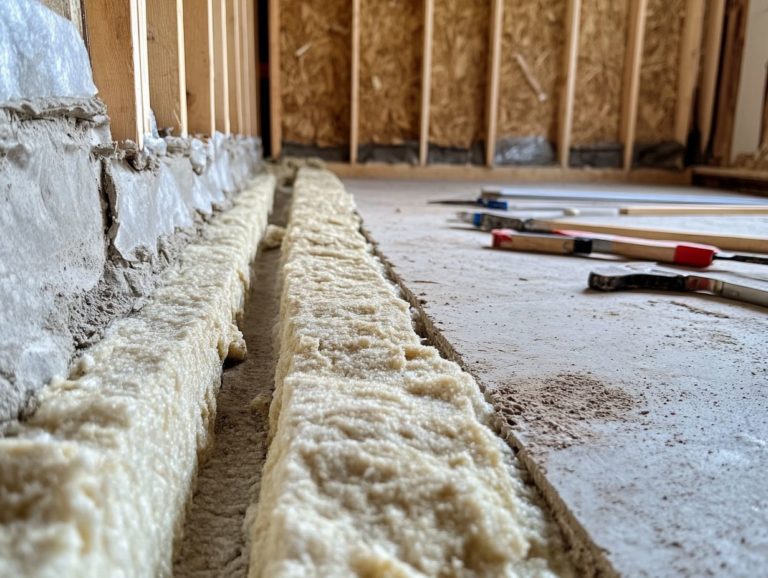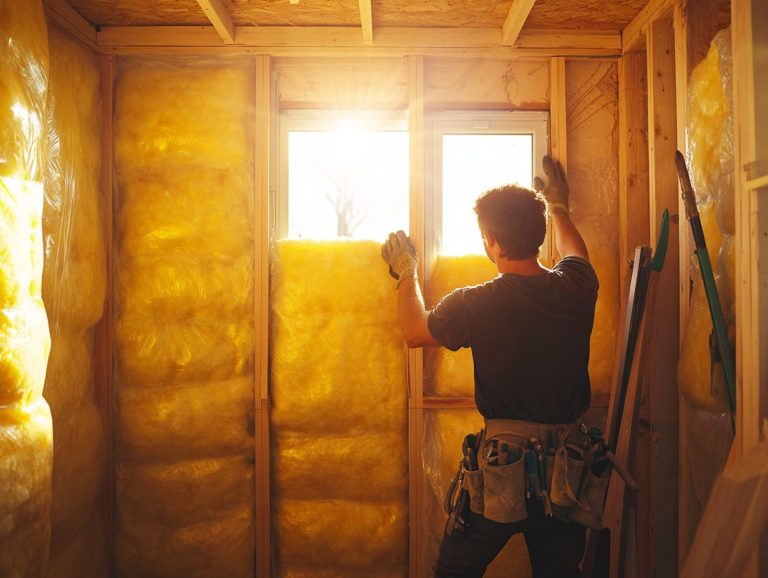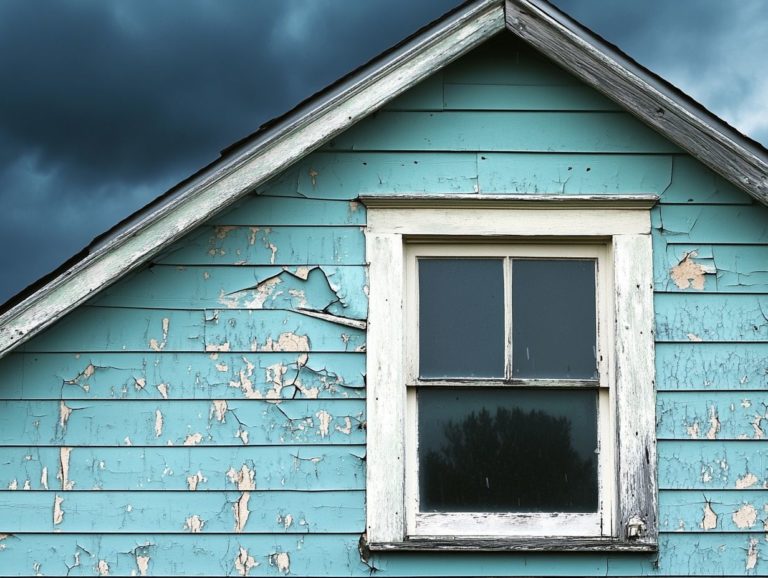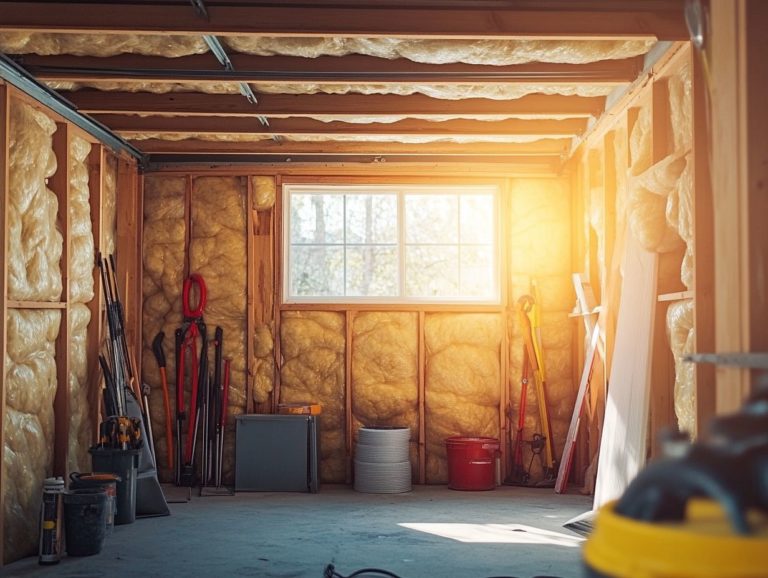Insulating Your Home: A Step-by-Step Guide
Insulating your home is one of the wisest investments you can make for both comfort and energy efficiency.
This guide delves into the many benefits of proper insulation, from significant energy savings to enhanced comfort across the seasons. You’ll uncover various insulation materials, learn how to assess your unique needs, and discover essential preparations to undertake before installation.
We’ll guide you through the installation process, sharing vital tips for maintaining your insulation over time. We will highlight common mistakes to avoid, ensuring that your insulation performs at its peak.
Keep reading to turn your home into an energy-efficient sanctuary!
Contents
Key Takeaways:
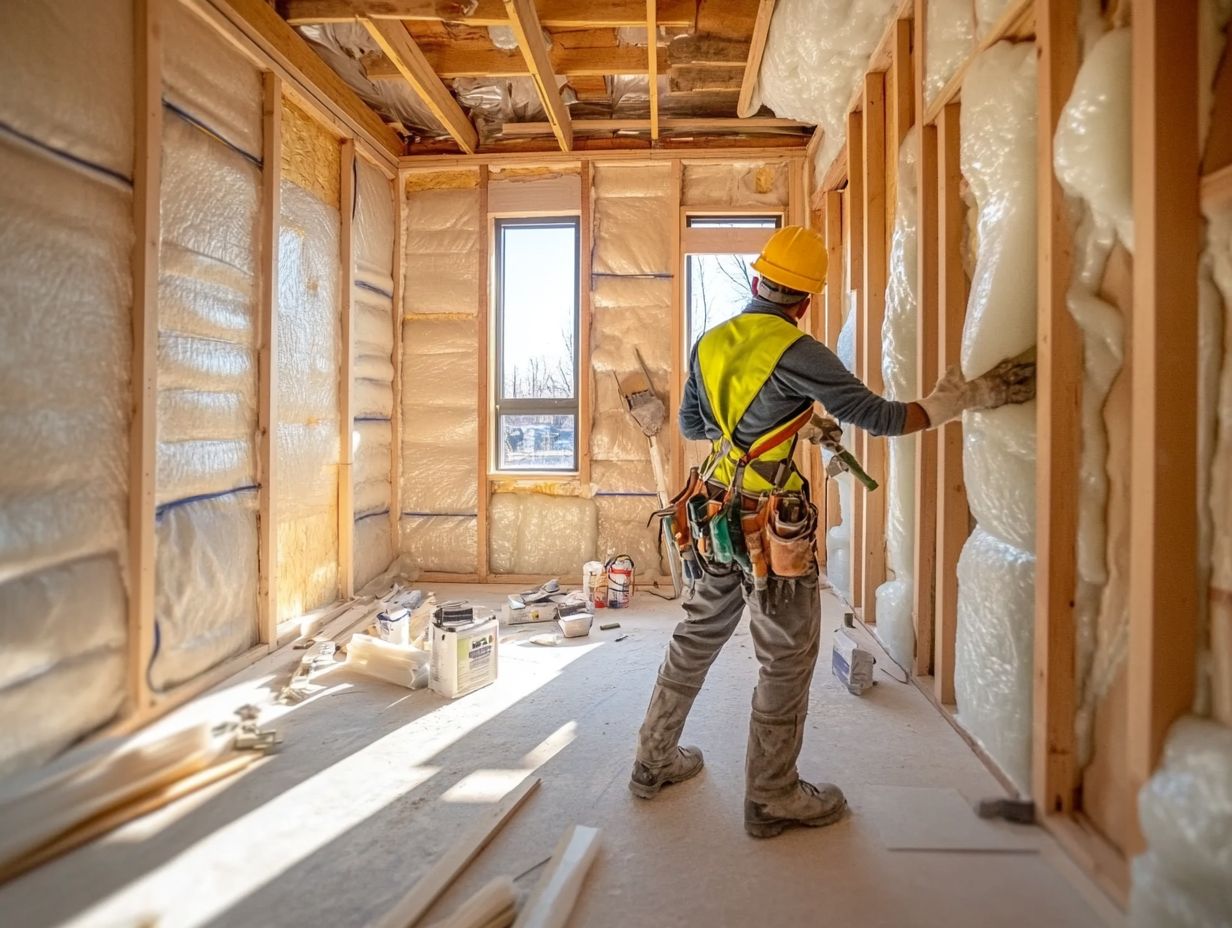
- Proper insulation can provide numerous benefits for your home, such as energy efficiency, cost savings, and comfort.
- There are different types of insulation materials available, each with its own advantages and disadvantages.
- Considering factors like climate, budget, and existing insulation can help you determine your specific insulation needs.
Why Insulate Your Home?
Insulating your home is a smart choice in boosting energy efficiency, minimizing your impact on the environment, and creating a comfortable living space.
With the right insulation, you can enjoy substantial savings on heating and cooling expenses. This transforms your endeavor from a mere home improvement project into a savvy investment for the future.
Taking an expert approach to insulation not only enhances performance but also elevates the value of your property, making it an essential consideration for homeowners and anyone planning renovations.
Benefits of Proper Insulation
Proper insulation brings a wealth of benefits that enhance both the comfort of your home and its overall energy performance.
By effectively managing the temperature in your living space, quality insulation significantly reduces energy consumption. This means you can enjoy savings on your utility bills.
This plays a vital role in sealing air leaks, preventing conditioned air from escaping and creating a more stable indoor environment.
With efficient materials like fiberglass and cellulose, insulation also acts as a sound barrier, keeping external noises at bay and fostering a serene atmosphere inside your home. These advantages not only boost energy efficiency but also contribute to a healthier, more peaceful living experience.
Types of Insulation
Understanding the different types of insulation is crucial for selecting the right materials for your home, as each option provides distinct benefits and applications.
Whether you’re considering cellulose, fiberglass, mineral wool, or rigid foam, your choice of insulation can greatly influence your home’s energy efficiency and overall comfort.
It s vital to take into account factors such as R-value, which measures how well insulation can resist heat flow, and how well the material handles moisture to ensure you achieve optimal performance and safety in your living space.
Overview of Different Materials
Different insulation materials, such as fiberglass, cellulose, mineral wool, rigid foam, and polyurethane, each bring their own unique properties to the table, influencing their effectiveness and suitability for various applications.
You ll find that each material offers differing R-values, which reflect its resistance to heat flow and overall thermal performance. This means that some options might be more efficient than others, especially depending on your local climate.
The installation methods also vary; fiberglass can be installed as batts or blown in, while cellulose is typically blown into attics and walls.
Cost considerations are significant as well. Materials like polyurethane may require a higher initial investment, but they often deliver superior long-term energy savings.
Performance characteristics also differ; for instance, cellulose excels at soundproofing, whereas mineral wool effectively resists fire and moisture, making it a great choice for a healthier indoor environment.
Understanding these aspects is essential for anyone looking to enhance energy efficiency and create a more comfortable living space.
Determining Your Insulation Needs
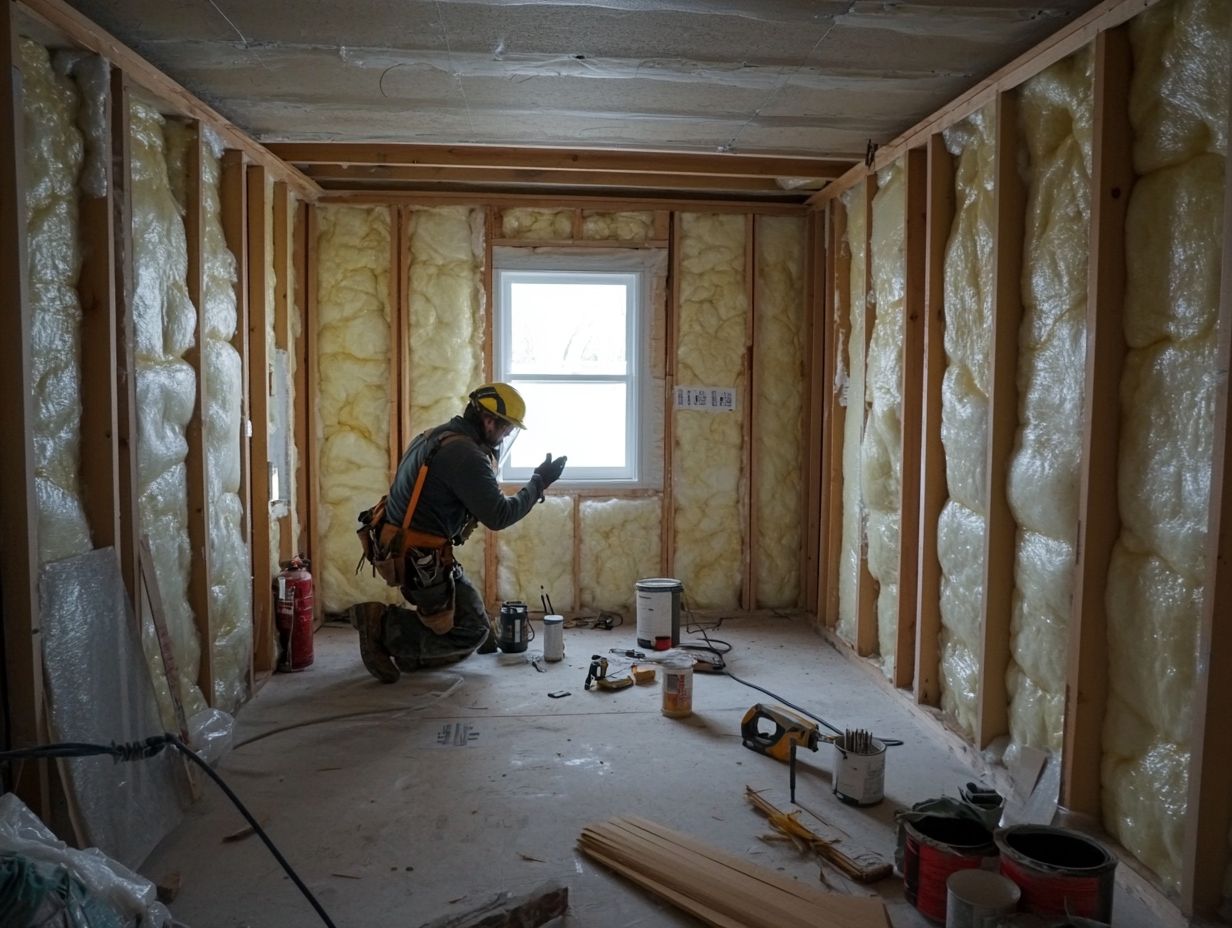
Determining your insulation needs requires understanding several key factors. These include the age of your home, current insulation levels, and areas vulnerable to air leaks, such as attics and basements.
By conducting an energy audit, you can pinpoint gaps and problem areas. This enables you to make informed choices about potential insulation upgrades.
Engaging with professionals can offer invaluable, tailored recommendations that cater to your home s unique requirements. Ultimately, this enhances both comfort and energy efficiency.
Factors to Consider
When you assess your insulation needs, several critical factors will come into play. The R-value measures how well your insulation keeps heat in or out.
This number is fundamental to your home’s energy efficiency. You should also consider your local climate conditions, as varying temperatures and humidity levels can significantly impact insulation performance.
Understanding the specific building codes in your area is equally vital. These regulations dictate the minimum insulation requirements necessary for compliance and optimal energy efficiency.
Your personal comfort preferences will further refine your insulation choices. Think about your desired indoor temperatures and what feels warm and cozy to you.
Moisture control is essential. Excessive moisture can degrade insulation materials over time, leading to reduced effectiveness and potentially costly repairs.
Ensuring that proper ventilation and moisture barriers are in place will enhance the longevity and performance of your insulation system. This keeps your home comfortable for years to come.
Preparing for Insulation Installation
Preparing for insulation installation is a vital step that can significantly impact the effectiveness and longevity of your insulation system.
Before the installation kicks off, it s essential to tackle air leaks and seal any gaps. Also, think about moisture management strategies.
Installing a vapor barrier can be instrumental in preventing moisture issues. This proactive approach ensures your insulation provides maximum comfort and energy savings for years to come!
Steps to Take Beforehand
Before you dive into insulation installation, it s essential to follow specific steps to ensure a successful and effective process.
- Start by identifying and sealing any air leaks and gaps.
- Begin with a thorough assessment of your existing insulation to gauge its condition and effectiveness.
- Address any necessary repairs in compromised areas, especially around potential draft sources like windows and doors.
- Implement air sealing strategies; this enhances energy efficiency and safeguards the insulation from potential moisture damage.
- Prioritize safety during this preparation phase use appropriate personal protective equipment and create a hazard-free workspace to prevent accidents or injuries.
Insulation Installation Process
You can follow these key steps for a successful insulation installation. To achieve the best results, understanding the insulation installation process and enlisting the expertise of professionals is often advisable.
From selecting the appropriate materials to employing proper installation techniques, each phase significantly enhances energy efficiency and reduces your carbon footprint.
Adhering to expert recommendations can profoundly elevate the overall value and comfort of your living space.
Ready to improve your home’s comfort and efficiency? Contact an insulation expert today!
Step-by-Step Guide
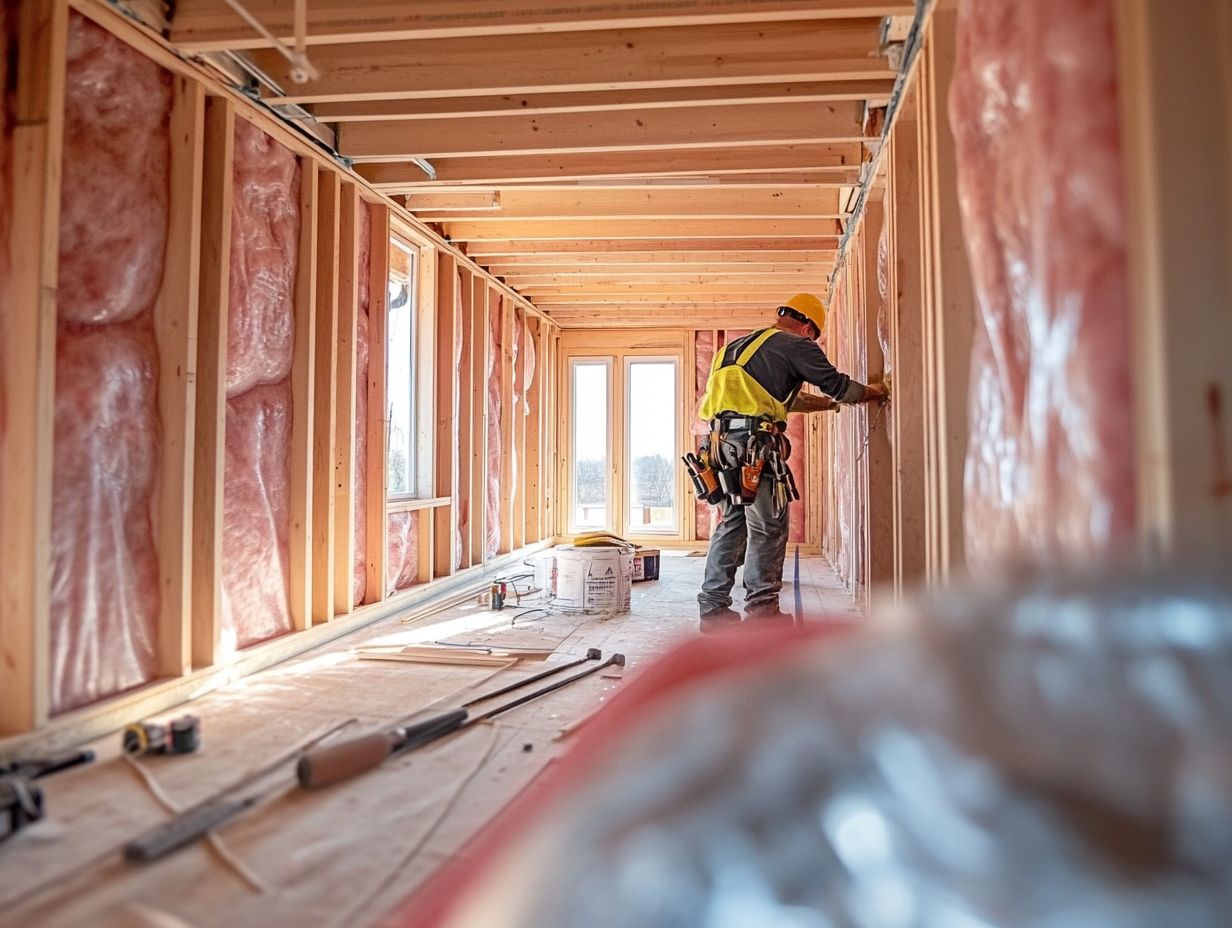
A step-by-step guide to insulation installation can illuminate what to expect and help you execute the process efficiently and effectively, especially when following the best insulation practices for homeowners.
Understanding the installation journey begins with meticulous preparation. Start by assessing the area that requires insulation. Note any existing materials and potential obstacles that might complicate matters.
Once you ve documented the necessary measurements, gather the right insulation materials. This could range from fiberglass to foam boards or spray foam, depending on your specific needs. Remember, as you handle these materials, wear your safety gear to protect yourself from dust or fibers that may cause irritation.
When it s time for installation, seal any gaps diligently to prevent air leaks, as even the smallest openings can undermine your efforts. Embrace energy-efficient practices, such as maintaining consistent temperatures during installation and using high-quality weather stripping. This will significantly boost the overall performance of your insulation.
Maintaining Your Insulation
Keep your insulation in top shape! Maintaining your insulation is crucial for its long-term effectiveness and performance while preventing moisture issues and gaps that can develop over time.
By conducting regular inspections and maintenance, you can pinpoint areas needing sealing or repairs. This protects your investment in insulation.
Implement effective moisture control strategies and swiftly address any gaps. This will enhance the durability and efficiency of your insulation system, ensuring your home remains comfortable throughout the year.
Tips for Long-Term Effectiveness
To ensure the long-term effectiveness of your insulation, adopt regular maintenance practices and moisture control strategies.
Schedule routine inspections at least once a year. This helps catch any wear or gaps that may have emerged over time. Sealing these gaps promptly boosts your insulation’s efficiency and prevents air leaks that can cause your energy bills to soar.
Monitor moisture levels in both the attic and basement. Excessive humidity can lead to the degradation of insulation materials. Install vapor barriers in moisture-prone areas and ensure proper ventilation to enhance the longevity of your insulation.
Taking these straightforward steps can significantly contribute to creating a comfortable and energy-efficient home environment.
Common Mistakes to Avoid
Avoid common mistakes during insulation installation to achieve the comfort and performance you desire in your home.
Many homeowners tend to overlook critical aspects, such as properly sealing air leaks or selecting inappropriate materials. These oversights can severely compromise the effectiveness of your insulation.
By recognizing these pitfalls and embracing best practices, you can significantly elevate the insulation process and protect your investment for the long term.
How to Ensure Proper Installation
Ensuring proper installation of insulation is essential for maximizing its effectiveness and performance. It all begins with meticulous planning and execution.
This process encompasses key techniques that enhance energy efficiency and indoor comfort. Focus on air sealing, as it prevents unintended airflow that can diminish insulation s benefits.
Select the right materials tailored to your specific climate and building type. Adhere to best practices throughout the installation, such as proper layering and avoiding compression of insulation.
For more complex projects, consulting professionals is advisable. Their expertise can ensure that these techniques are implemented correctly, resulting in a well-insulated environment that stands the test of time.
Frequently Asked Questions
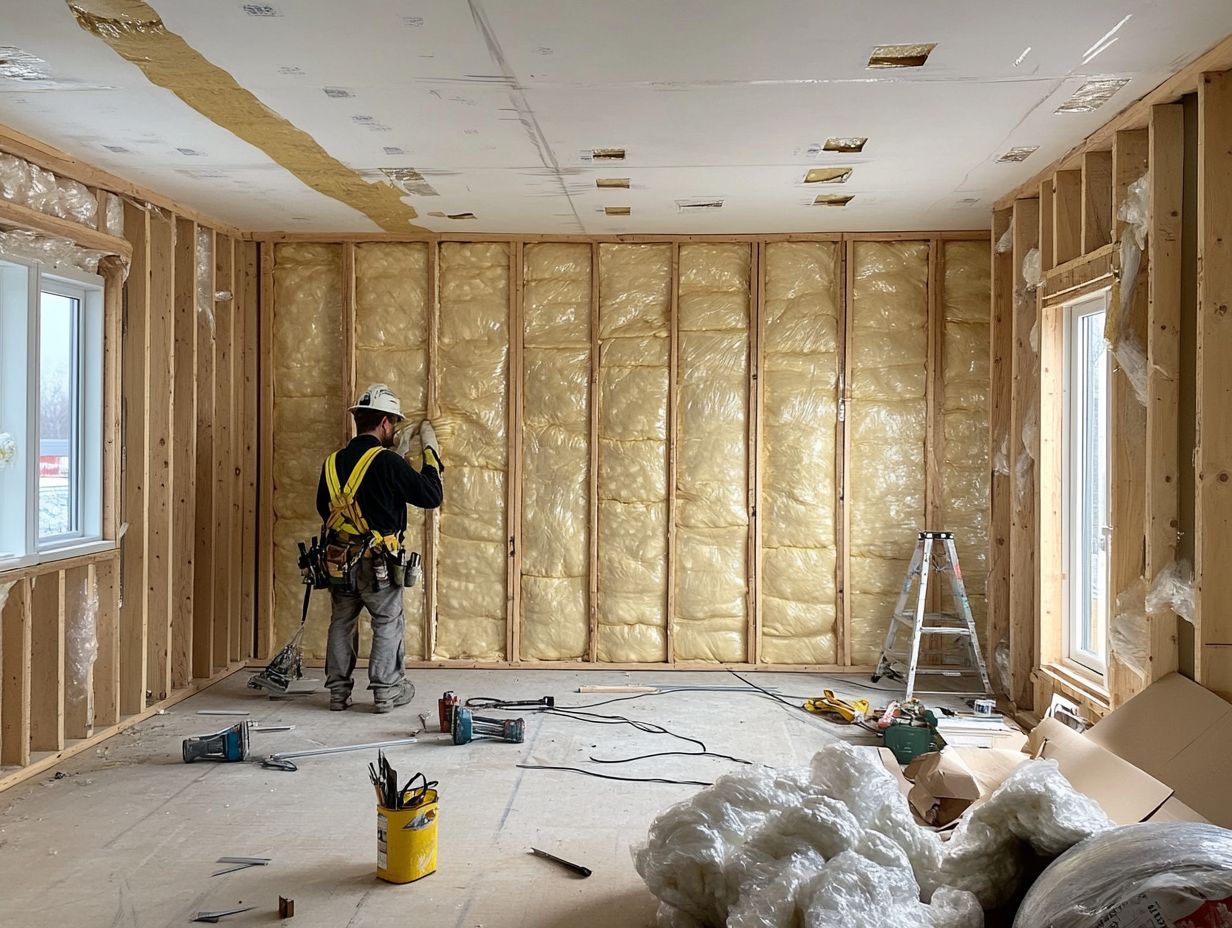
What are the benefits of insulating my home?
Insulating your home helps lower energy costs and keeps your indoor temperature comfortable. It also reduces noise and improves air quality.
Where should I start when insulating my home?
Start by checking your current insulation levels. You can conduct a home energy audit or hire a professional for a thorough assessment.
What type of insulation is best for my home?
The best insulation depends on your climate, budget, and specific areas needing insulation. Common options include fiberglass, cellulose, and spray foam.
Can I install insulation in my home myself?
While DIY insulation is possible, hiring a professional is often better. Poor installation can cause energy loss, so getting it right is crucial.
How can I find a reputable insulation contractor?
Ask friends and family for recommendations or research online. Look for licensed and insured contractors with positive reviews from past customers.
How often should I replace or add insulation to my home?
Insulation lasts many years but may need replacement if damaged or if your energy bills rise. Regularly check it to ensure it’s still effective.


